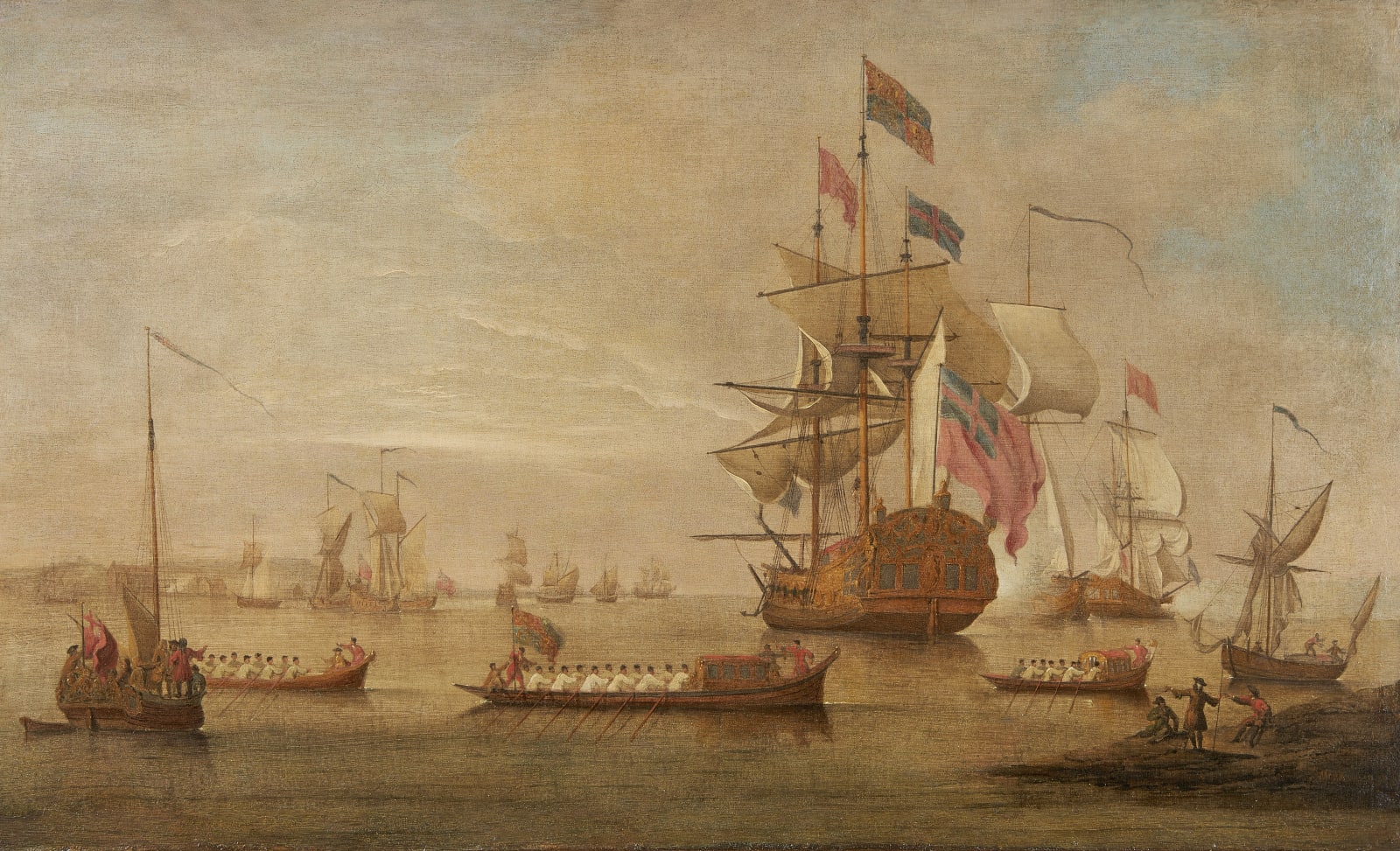Peter Monamy British, 1681-1749
Provenance
Collection C.M. Hand, 1936
Bonhams, Knightsbridge, Marine Pictures, August 16th, 1990, Lot 394 titled ‘A Royal Yacht putting into Port’.
Christie's, 370MR stencil
A smaller version of this work was sold at Sotheby's London: Wednesday, July 15, 1998 [Lot 10], British Paintings 1500-1850.
A further version of this subject is illustrated in FB Cockett’s book on Peter Monamy, plate 11. Cockett states that Monamy made a number of works depicting the arrival of George II at Margate, following his frequent trips to Hanover and typically in his favourite yacht Carolina.
When George I succeeded to the British throne in 1714, he spoke no English and surrounded himself with Hanovarian courtiers and advisors to the extent that the populace very quickly named him ‘German George’. His extreme fondness for his native Hanover was such that he made frequent journeys there, often for lengthy periods, and it is probably fair to say that he never felt entirely at home in his new Kingdom, despite its prestige when compared to the land of his birth. Although rather more of an anglophile than his father, George II was also deeply enamoured of Hanover and went there often, albeit less frequently than George I. Both monarchs invariably travelled in the lavishly appointed royal yacht Carolina, built in 1700 as the Peregrine but refitted and renamed in 1716 in honour of the new Princess of Wales, the future Queen Caroline, consort of George II. Extensively rebuilt and renamed Royal Caroline in 1733, she continued to enjoy the role of principal royal yacht until 1749 when a newer and larger Royal Caroline was completed for sea. By then almost fifty years old, the first Royal Caroline (ex. Carolina and ex. Peregrine) was handed over to the Royal Navy for normal duties and converted to a sloop. Reverting to her original name of Peregrine at the same time, she was last seen in heavy weather in the western approaches on 28th December 1761 whilst en route to the West Indies, after which she disappeared without trace with the loss of all hands.
